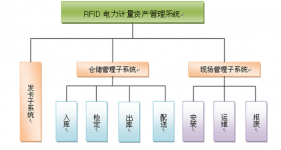
RFID power asset management system is that simple
[ad_1]
Overview
For a long time, traditional power asset management methods have generally relied on non-automated, paper-based systems to record, track and manage; a few use barcodes to realize asset identification and management; but the efficiency is extremely low, as the number of assets increases. The increase greatly increases the burden on managers, and at the same time increases the difficulty of asset management, often causing problems such as untimely data and high error rates. It often leads to confusion in inventory management and errors in data in and out of the warehouse. If it cannot be solved for a long time, it will bring great cost problems to the enterprise.
Use RFID automatic identification technology to realize the automation and paperlessness of data collection; improve the completeness and effectiveness of the equipment inspection system; use advanced technology to make full use of stored data and convenient and efficient query of data and application results , Has become an effective solution.

Goals
The main realization goals of using RFID radio frequency identification technology to manage power assets are:
1. Position the assets in a timely and reliable manner
2. Non-contact automatic identification of power attribute information
3. Reduce the inventory cost of power assets, improve inventory utilization and audit frequency
4. Adopt automatic/semi-automatic identification method to improve the accuracy and operation efficiency of inventory
5. Realize real-time network sharing and management of power asset data, and complete report output according to needs
6. Establish a unified power asset information platform to improve the level of asset supervision
The main function
The power resource system includes asset (equipment) management, inspection management, work order (job card), project management, plan management, management analysis, mobile operations, geographic information, two ticket management, power outage management, and other multi-faceted, multi-level business and Information is a comprehensive management system that runs through the life cycle of equipment.
The functional structure is as follows:
Asset (equipment) management
Asset (equipment) management combines equipment and spare parts from different perspectives such as location, equipment, system, network logic, etc., and associates it with equipment procurement, technical specifications, maintenance, testing and other materials, tracking equipment throughout the entire Detailed information and value changes such as defects, maintenance and changes in the life cycle can realize dynamic management of equipment.
System advantages
1. Fully manage the asset life cycle, and strictly control all links
The asset management process includes new asset storage, asset cards, asset allocation, asset leasing and lending, asset operation, asset maintenance, asset repair, asset retirement, donation and allocation, etc. Through standardized control of the process, the asset information management system More institutionalized and process-oriented.
2. Timely warning and comprehensive monitoring
Established and perfected an effective online early warning system to prevent risks, monitor and manage asset use and change information throughout the entire process, grasp asset dynamics throughout the process, and prevent asset loss.
3. Personalized definition
According to the actual business needs of the enterprise, change the business change type, asset type, organization, department, and role custom work approval flow to meet the needs of the enterprise for multi-dimensional asset management business.
4. Using advanced RFID technology, professional and accurate data statistics
The use of advanced RFID technology to carry out comprehensive and accurate statistics on assets from purchase, use, transfer, inventory, cleaning to scrapping, etc., breaking through the heavy manual statistics in the past, saving manpower and material resources, shortening the inventory time, and ensuring the accuracy of asset management. fast.
5. The management is in place, the responsibility is to the individual, and the rights and responsibilities are more clarified
Asset management has the characteristics of a large amount of information, involving many positions and personnel. Through the collection and monitoring of asset information, it realizes the simultaneous management of assets and user units, departments, and personnel, and truly realizes “hierarchical management and responsibility to individuals”.
6. Support multi-organization system and centralized management
To achieve centralized asset management, the asset authority can fully understand the asset inventory, distribution, and asset operation of different regions and institutions in a timely manner. Daily system maintenance only needs to be performed on the authority’s server.
[ad_2]



